Textiles serve to form a complete image of the room, where tulle plays one of the important roles. The drapery, color and length make the interior look different, even though the furniture and the color of the walls remain the same.
Features of window decoration tulle
A correctly chosen tulle will become a special accent of the interior or a neutral background for decor items. It is distinguished by transparency, smooth or openwork texture of a neutral or bright color.
Tulle at the same time protects the room from the sun's rays and lets them pass, while scattering, which brings an airy and cozy atmosphere to the interior. Lightweight fabric drapes well and holds the desired shape.
On the picture An example of a bedroom where there is no cornice and the curtain falls off the niche. This option is suitable for a small room with a wide window.
Rules for choosing tulle:
- Tulle and curtains in the interior should be contrasting or complement each other, differing in shades. If there is a pattern on the curtains, then the tulle should repeat it, or remain neutral;
- It should be selected according to the style and color of the interior, taking into account whether the emphasis will be placed on the window, or it will become the background for other interior items;
- If there is no reference to a specific style of the interior, then a tulle of neutral beige and white shades without an eye-catching pattern will be a win-win choice;
- For individual sewing, you need to take into account the peculiarity of the fabric, its shrinkage during sewing, and then washing, it is best to select the curtains from the photo;
- When choosing a natural tulle, it should be remembered that fabric with the addition of polyester wrinkles less. It is worth paying attention to the fact that the material is saturated with a special antistatic and dirt-repellent agent, especially if the textiles will be used in the kitchen.
Types of Tulle
Tulle adds space to a small space, masks an uneven window opening, creates a play of rays and light. Textile production offers a wide selection of tulles in texture, which can be divided into smooth, openwork and mesh.
- Standard tulle without large patterns can be made of cotton, organza. It is characterized by simplicity of design, the ability to use with curtains. It is better to wash it by hand, pre-soaking, without twisting with a light spin. Ironing is delicate through a cloth or wet gauze.
On the picture beige plain tulle, which in a light shade fits the interior without a pronounced emphasis on a particular color.
- Grid differs in the size of cells and is a background for curtains. It can be made of thin or thick weave threads. It is not recommended to use on your own, since such a tulle does not cover the room from the sun.
- Tulle with embroidery often found in photos in interiors. Embroidery can be of any size, for which metallized or silk threads are used. Complex patterns, gold monograms on a cream background are suitable for classics, floral color embroidery is suitable for country style, and for minimalism and modern style it is better to use embroidery with lines and simple geometry. Embroidered patterns can be simple and elegant, as in the photo example.
- Tulle happens in vertical or horizontal strip, which corrects the perception of space, makes it higher or wider.Narrow or wide stripes are monophonic or combined. The stripes can be inserted satin or embroidered.
On the picture tulle with horizontal large and small stripes that make the space wider and the interior interesting.
- Spider web It consists of interweaving of silk and synthetic threads, looks weightless, but at the same time is quite durable, does not require ironing. The web can be embroidered, used both independently and in combination with curtains.
- Kisei, noodles or filament curtains can be of different densities, with or without beads. They shade the room well, easily drape, do not crumple, and are convenient for decorating the door to the loggia. Suitable for modern interiors and used as a partition for different areas within the same room. They can also be combined with blinds, as in the photo.
- Tulle pattern can be embroidered, embossed, sewn. Jacquard pattern, curls, tulle with flowers will suit the classic style. Geometry and lines look good against the background of neutral curtains in a modern interior. The drawing can repeat the wallpaper pattern, as in the photo.
- Tulle rain It is called so because of the interweaving in a plain fabric of a dense thread that resembles rain. It attracts attention, but at the same time remains neutral, suitable for a rich interior, where you need to calm the overall background. It can be of the same color, with a vertical or horizontal gradient.
- Flower tulle Suitable for country style and provence. The size of the floral ornament should not conflict with the size of the tulle. Bright flowers look good on a neutral background of the walls, lush drapery is inappropriate due to the fact that the pattern will be invisible.
On the picture a bedroom in a modern style where a floral pattern is an object of attention. Embroidery with beige threads on a light organza looks modest and at the same time luxurious.
- Lace tulle most often used for interior bedrooms, terraces and living rooms. The openwork on the veil can be sewn, embroidered and bobbin. The fabric is completely lace or with inserts. Create a cosiness, let in light and protect from prying eyes.
- Tulle Pleated similar to a reaper, it can be used independently, does not crease, has high plasticity. It transmits light, but delays the rays of the sun, so it is suitable for windows on the south side.
On the picture grommet curtains in the nursery. Bright transitional color fills the room with saturated colors.
Color selection
White
Most often, for interior use white tulle in its pure form, shades of milk or ivory. It creates a light atmosphere, is suitable for small apartments, leaves the window visible and at the same time frames it well.
Gray
Gray is a neutral color and creates a veil effect. A dark shade is suitable for a large room, and light for a small one. The practicality of color can be seen in the photo.
The black
With black, you need to be careful, for example, in combination with a white or light finish on the floor, ceiling or walls, as an example in the photo.
Brown
Brown in a chocolate shade will be combined with milk curtains. Good effect on the creation of comfort in the apartment.
Beige
Beige color and champagne is suitable for a multi-color interior, combined with any shades, makes the room light.
On the picture french tulle curtains in the hallway. The beige translucent color is combined with the color of the tile ornament.
Red
Red color attracts attention, creates an emphasis and does not need to be complemented. It is important that the red tulle resonates with the decor, such as a carpet or figurine.
On the picture An example of a modern interior in red that looks stylish. Light walls and a light gray sofa counterbalance the red and black colors.
Yellow
Yellow is intended for dimly lit or cool rooms. This tulle is combined with brown, white, blue curtains.
Orange
Orange, like yellow, will warm the interior and emphasize the role of the window in the room.It looks good in the kitchen, in the hall and bedroom. Emphasizes activity and positive mood.
Gold
Gold, like white, is a classic for tulle. Most suitable for a classic living room and bedroom, combined with white, black, burgundy color.
Pink
Pastel pink accentuates the tenderness of the bedroom or the nursery, can be combined with light gray furniture and white wallpaper. Curtains with different shades of pink also look good, as in the photo.
Blue, blue
The blue and blue tulle will cool a hot room, it does not need to be combined with dark curtains. The color of the walls can be beige, white, blue, yellow.
Turquoise green
Turquoise and green relaxes, sets up for relaxation, is suitable for the bedroom and living room. Mint shades refresh and blend with the yellow, red, white color of the walls.
On the picture the interior, where a translucent turquoise organza is combined with gray curtains and acts as a bright accent.
Lilac purple
Lilac and purple emphasize the dynamism of the interior, which will always look fresh and interesting for guests. Can be with white or black embroidery.
Combination with other types of curtains
Tulle can be used as an independent element of decor, or can be combined with another type of curtains for greater dimming.
Curtain and tulle
Curtains and tulle are often found on the same ledge in any interior style. They can be plain or multi-colored. With this combination, the pattern should be on only one subject, or the pattern should match. It is not necessary to combine curtains made of natural fabric, for example, linen, and organza tulle.
Roller blinds and tulle
Combine if the tulle is transparent or covers half the window, while its length does not matter. When rolled up, the roll will not be visible.
Roman curtain and tulle
Roman curtains and tulle are suitable for a modern living room, nursery or bedroom. It is better to fix it on the sash or in the opening. The color of the Roman curtains can be the same or contrasting.
On the picture on the right is an example of how the interior looks harmoniously with a selected pattern of curtains for a picture on the wallpaper. Transparent tulle frames the window with a light drapery.
Thread curtain and tulle
Filament curtains and tulle can be combined under the condition of a combination of different colors, while filament curtains should be thick, and the tulle is openwork or translucent.
Style decision
Universal window decoration allows you to emphasize any style of interior.
Modern style
A plain tulle, striped, with small embroidery is suitable for a modern interior. The color does not matter, but it should be appropriate in the decor. Simple lines, crisp fabrics without asymmetries are welcomed in a contemporary style.
Classic style
The interior classic consists in the constancy and combination of heavy brocade or velvet curtains with light beige or white patterned muslin, as well as soft lambrequin or peroxides with fringe and tassels. When sewing, it is important to take into account that the tulle does not reach the floor 2 cm, and the curtains lightly touch it.
On the picture classic interior, where the curtains are attached to a closed baguette. Braid mounting provides frequent drapery of fabric.
Provence
For Provence, a lightweight fabric texture can be draped into the lush folds on the sides of the window. Suitable net, tulle with embroidery, with a floral pattern. The length can be any, depending on the interior and the size of the room.
Scandinavian style
The Scandinavian interior does not imply the use of heavy curtains, so white muslin without openwork of a simple cut is suitable here. It can also be combined with a roller blind.
Tulle in the living room, kitchen, bedroom and nursery
You can change the appearance of the room only by changing the textiles.
Living room
For the living room, organza, noodles, openwork tulle are suitable. The length is preferably up to the floor, and the mounting method depends on the desired drapery. Also looks good embroidery or photo printing custom made on polyester for the selected photo.
For the classic interior of the living room, white and beige color, lace, which are equally well combined with dark and light furniture, are suitable.
On the picture a combination of transparent Roman curtains, tulle and drapes with pickups on the bay window, where tulle draws a border between the windows.
Kitchen
Medium length curtains are suitable for the kitchen. It is important to choose a synthetic blended fabric that does not light up, crumple, and does not fade after frequent washing.
Bedroom
A spider line, rain, embroidery in pastel colors of green, pink, blue, beige is suitable in the interior of the bedroom. It can be combined with curtains and lambrequins, as well as Roman curtains, or used independently.
Children
For the interior of the nursery, color tulle or tulle with photo printing of cartoon characters is suitable. The length depends on the age of the baby. The room needs to be shaded for daytime sleep, so you also need to use roller blinds or blackout curtains.
Photo gallery
Tulle creates an atmosphere, changes the perception of the interior and can become a designer highlight, which shows a photo selection. This is a budget option that will help the room look new.



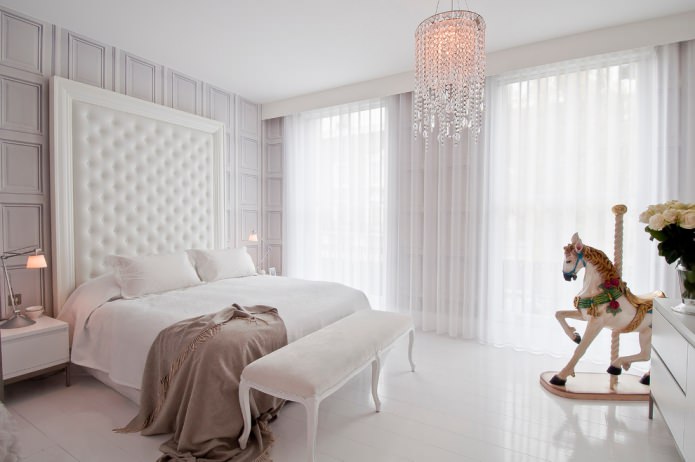
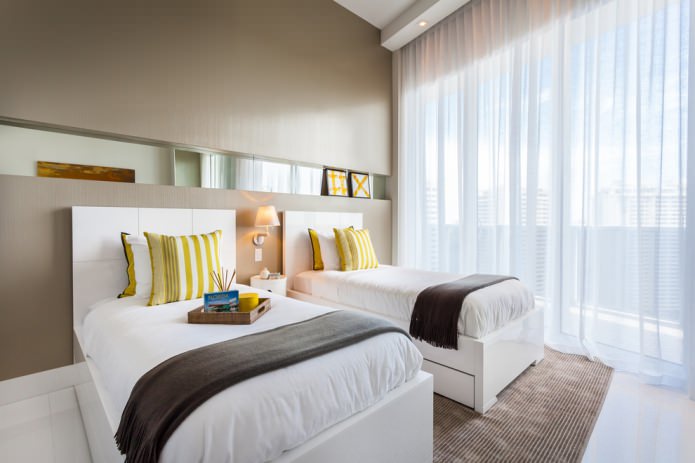
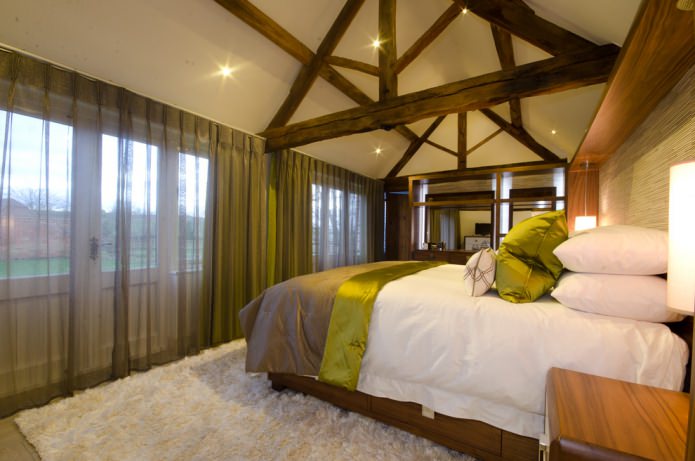
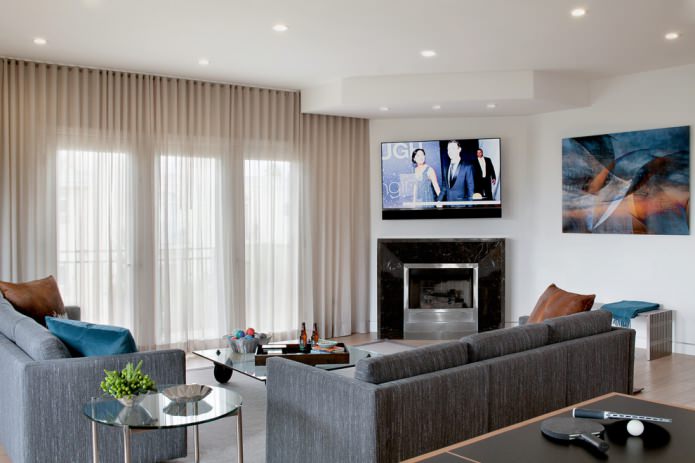
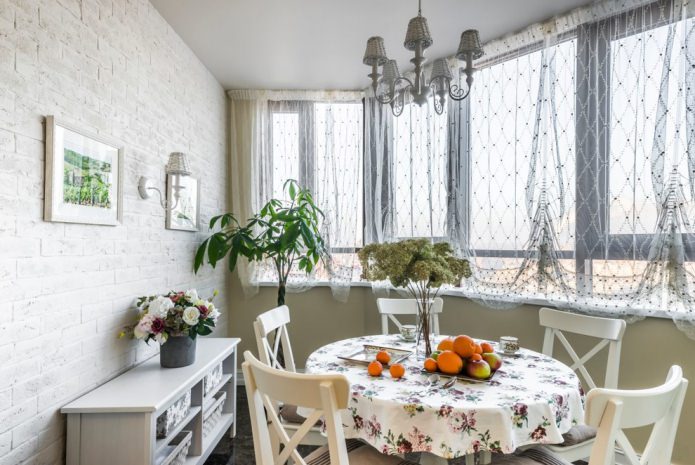
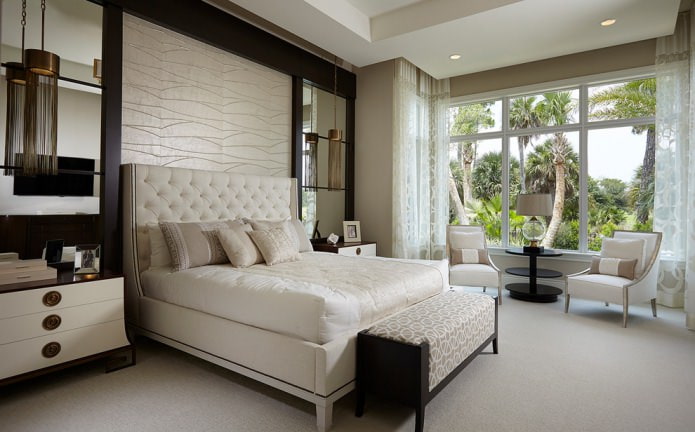
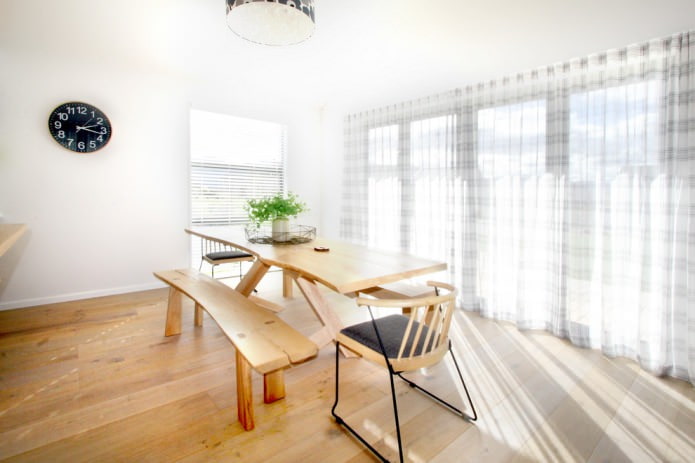
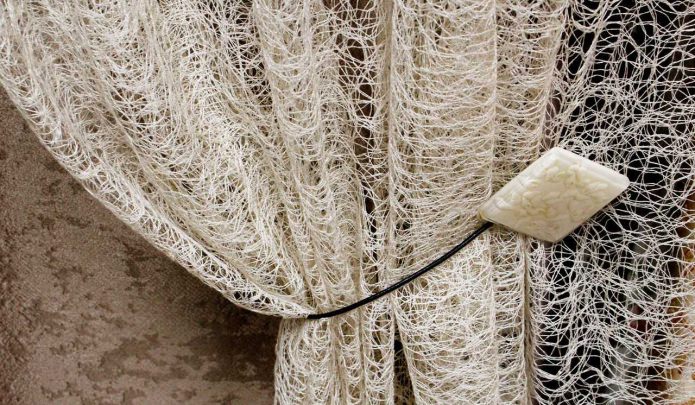
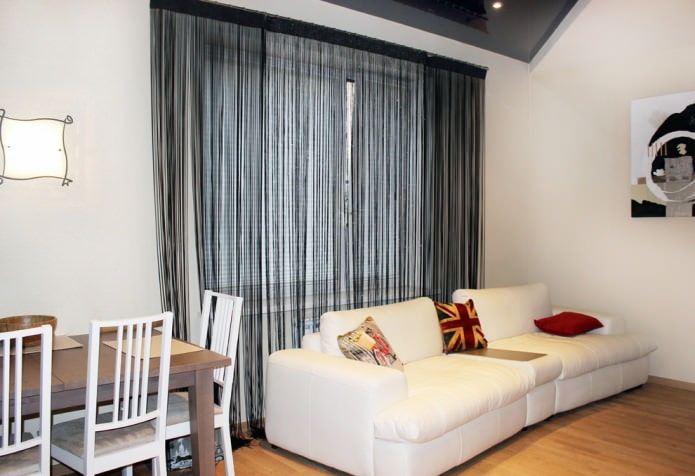
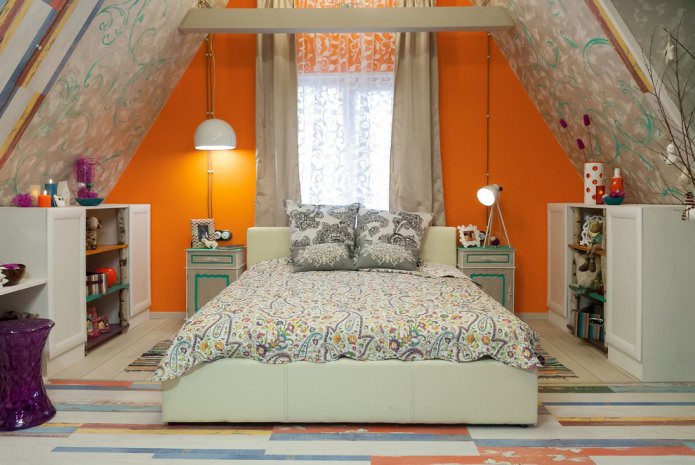

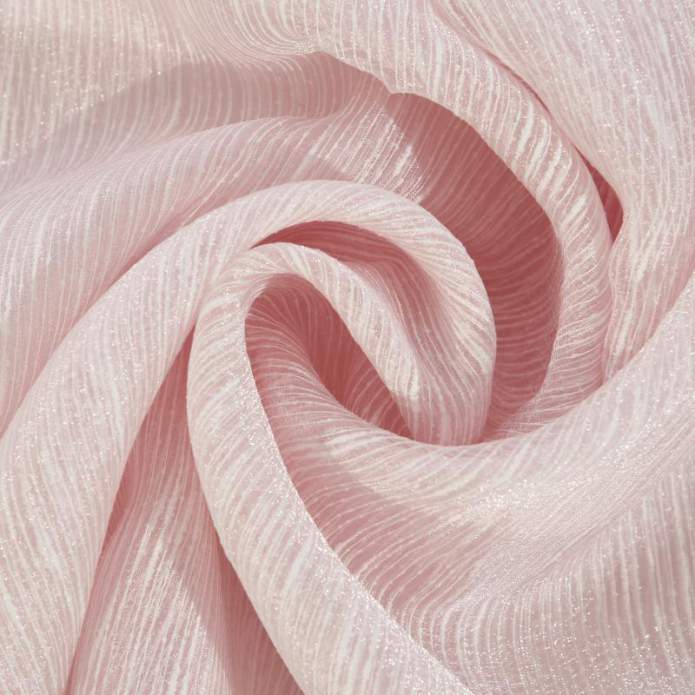
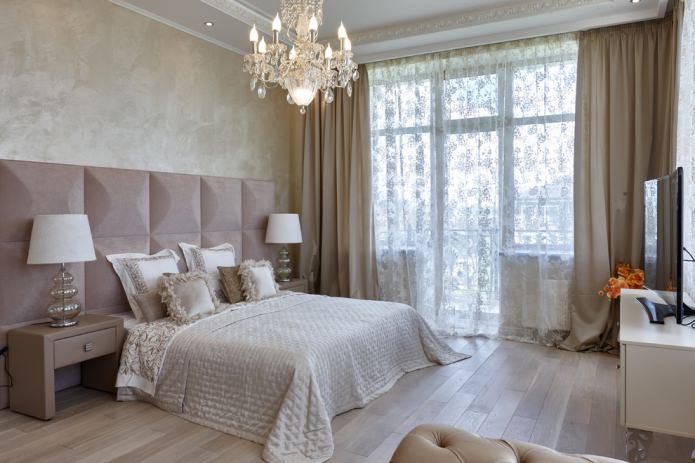
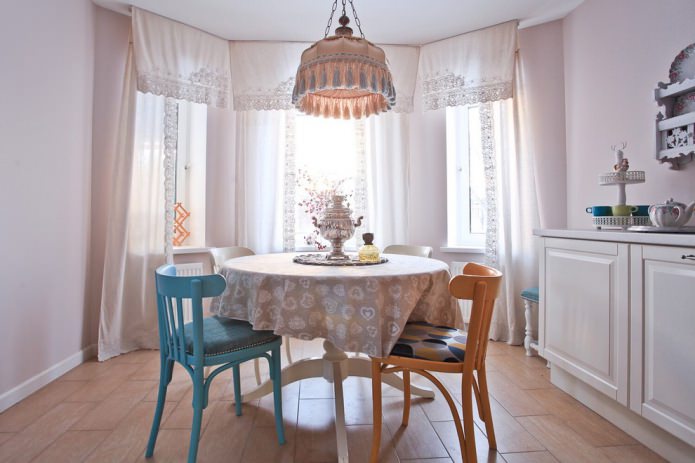
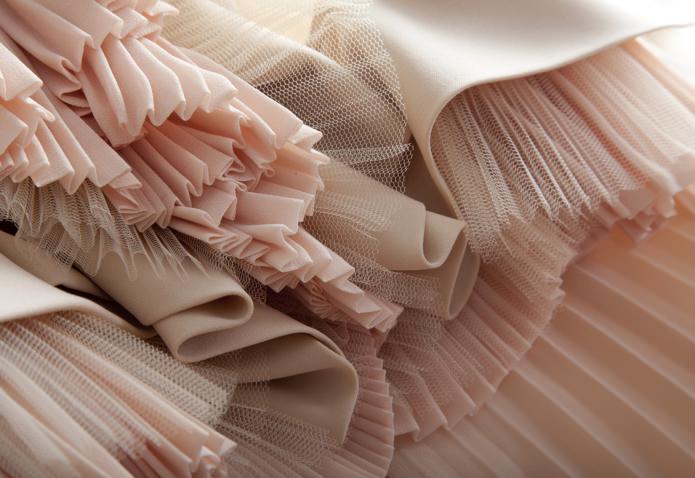
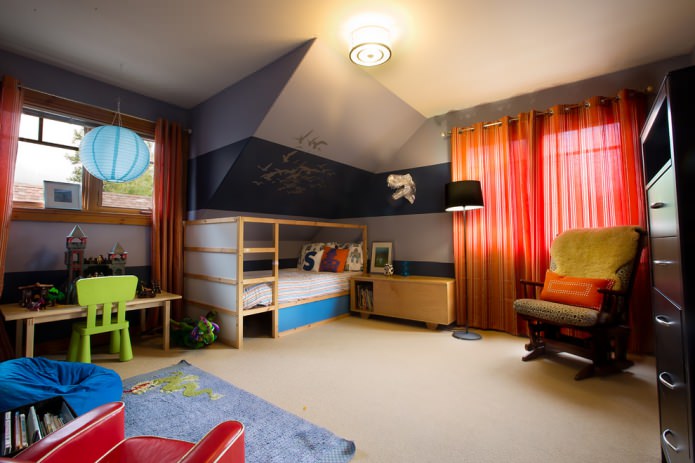
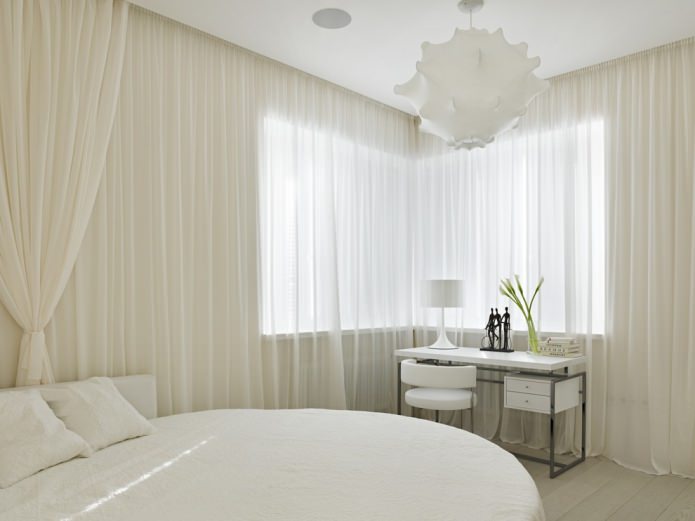
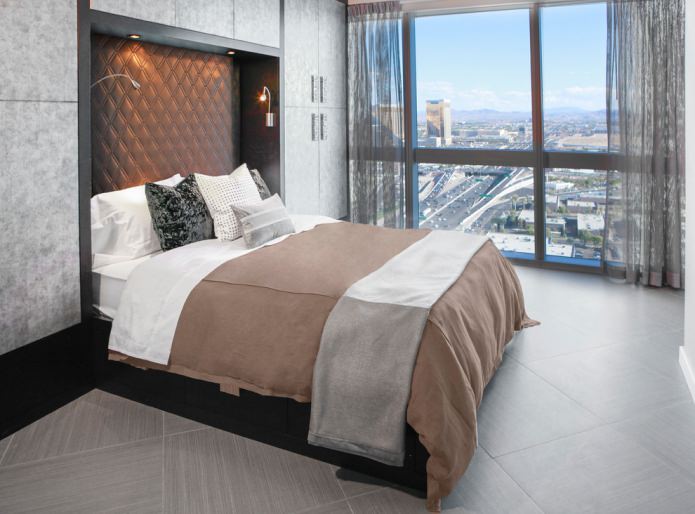
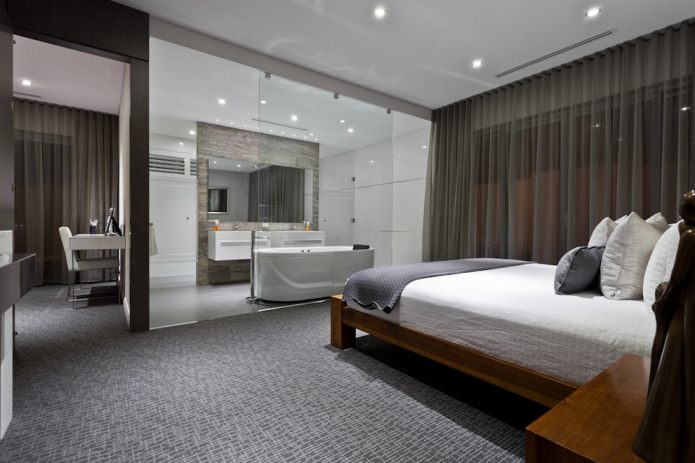
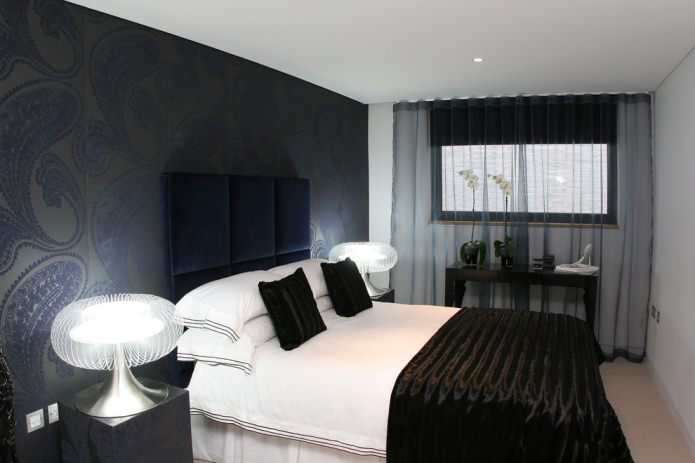
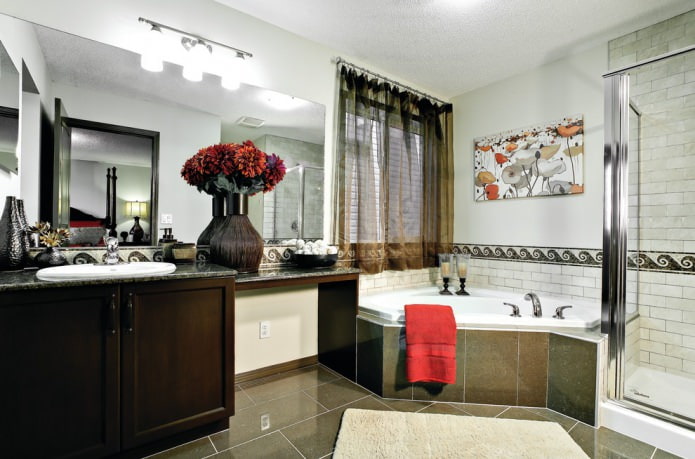
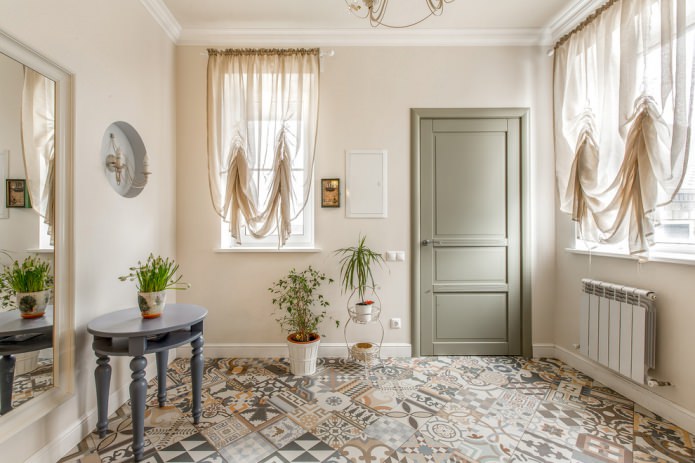
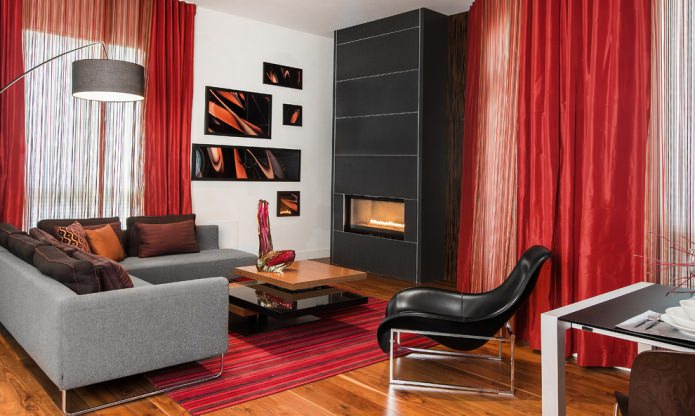

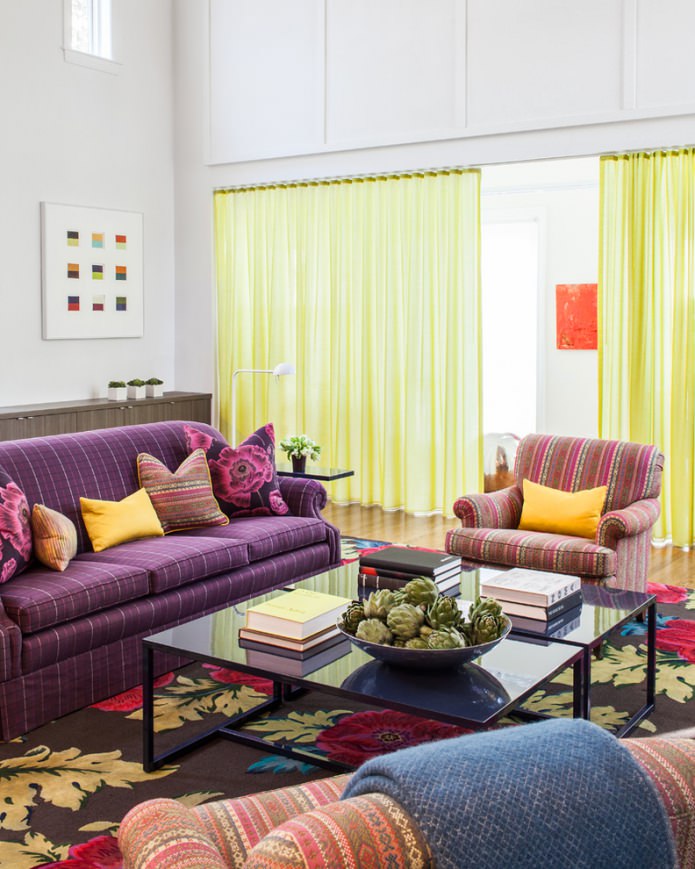

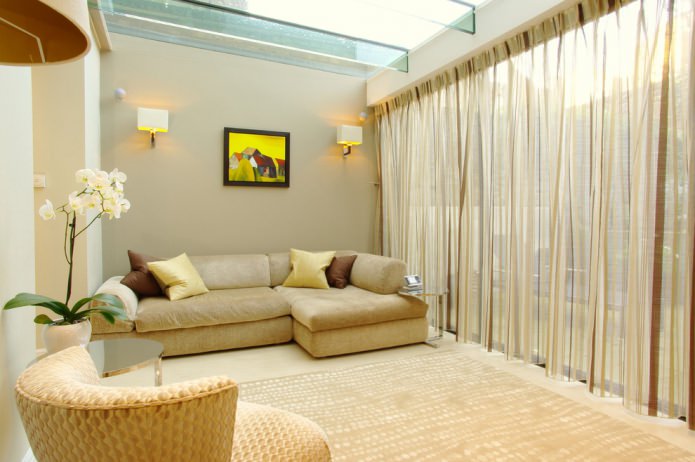
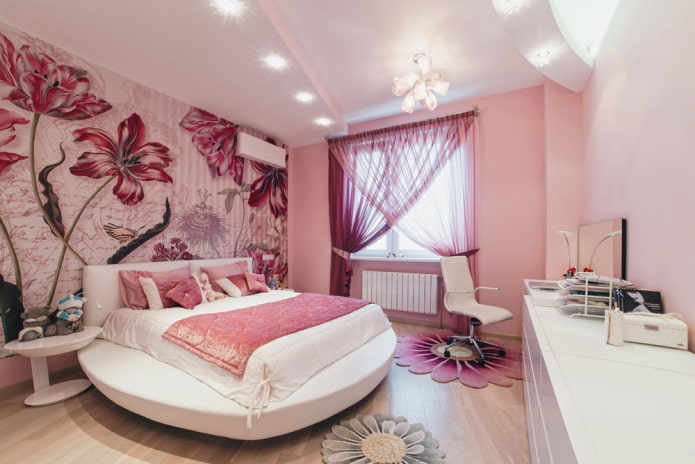

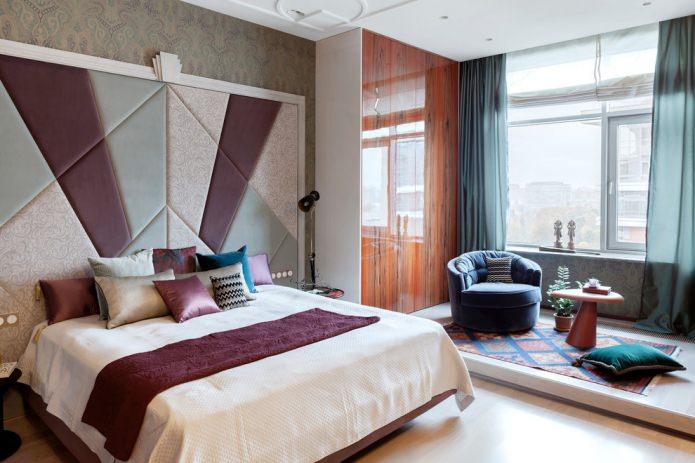

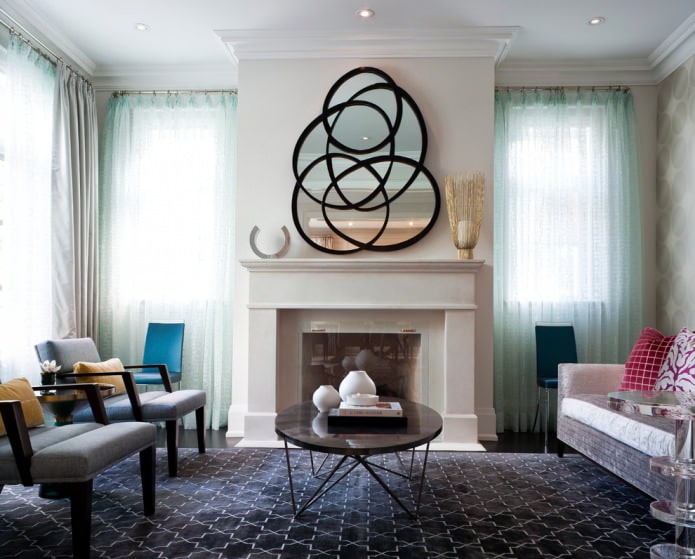
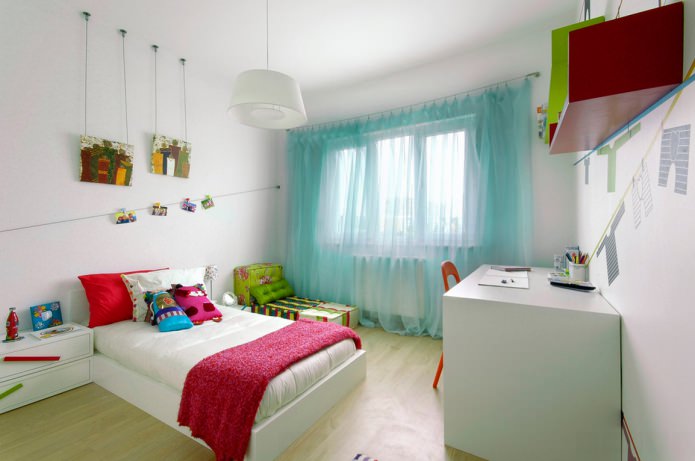

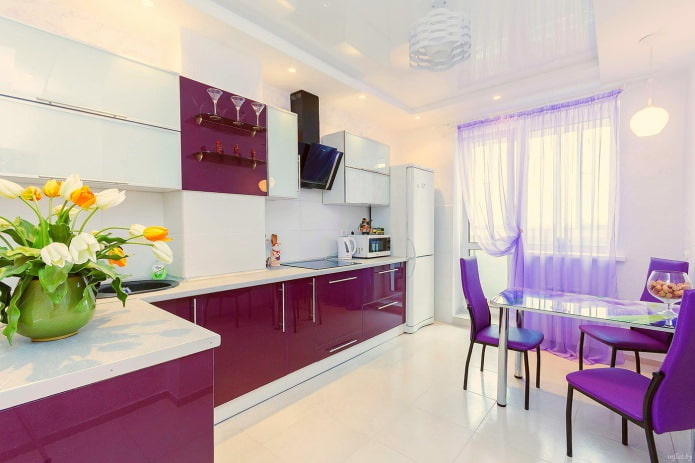
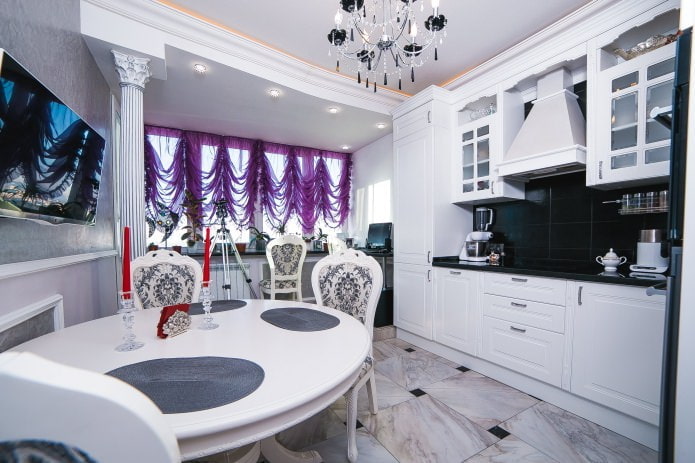

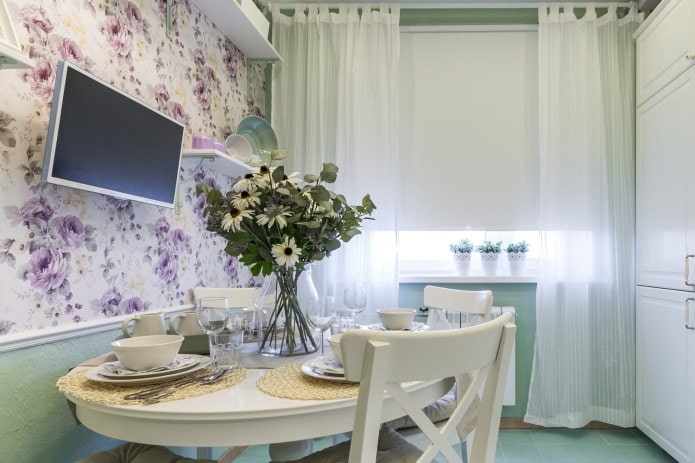
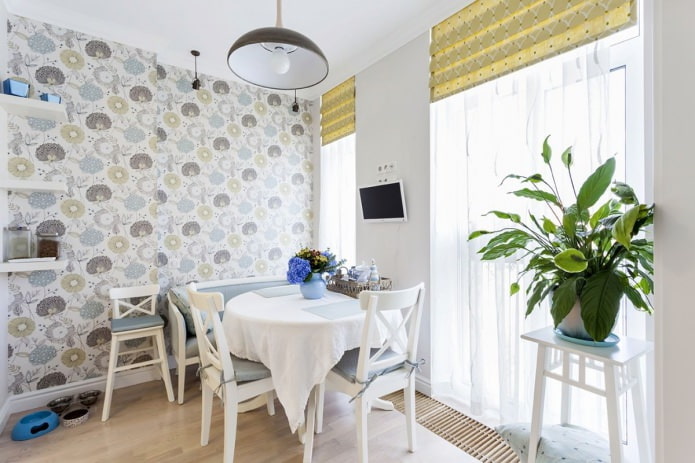


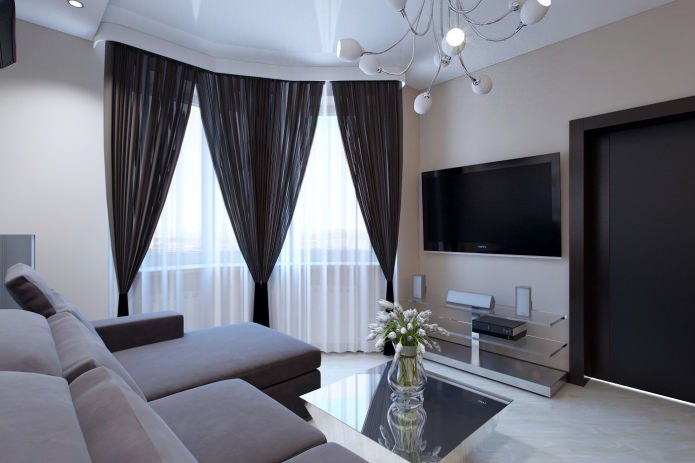

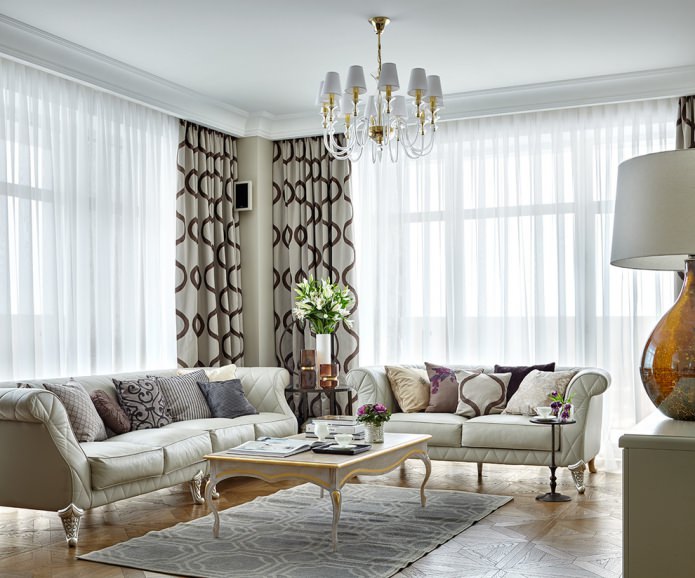


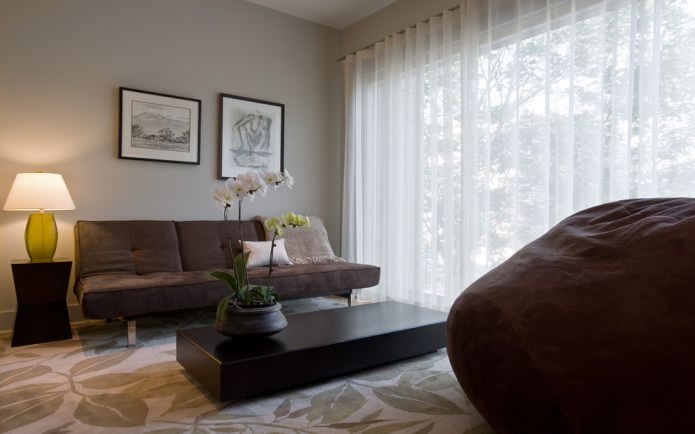
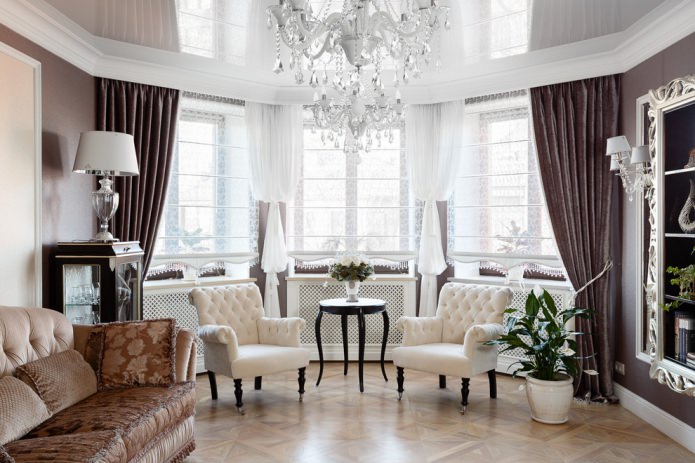

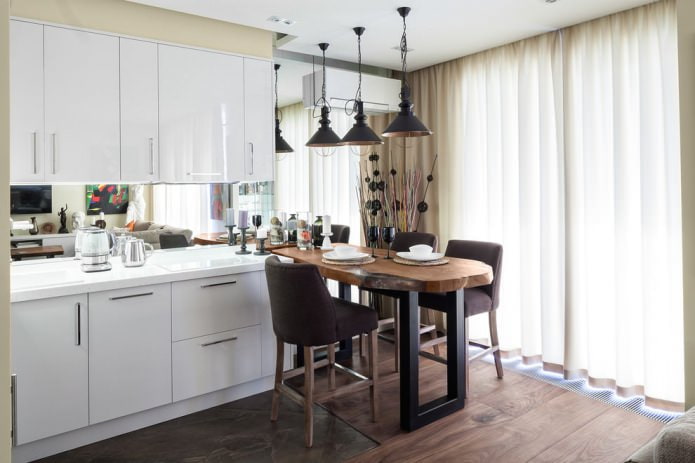
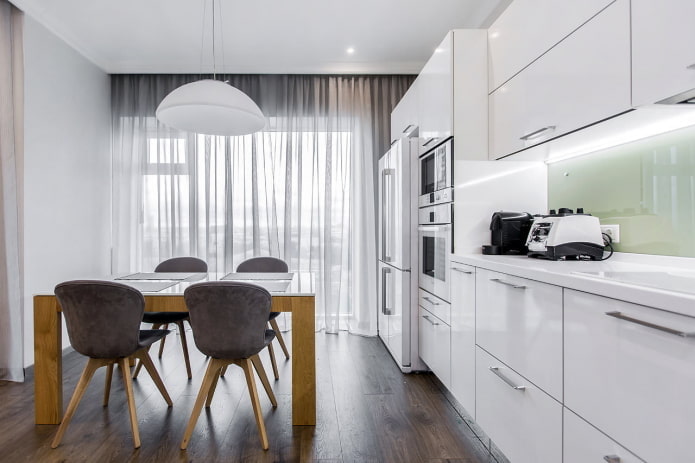
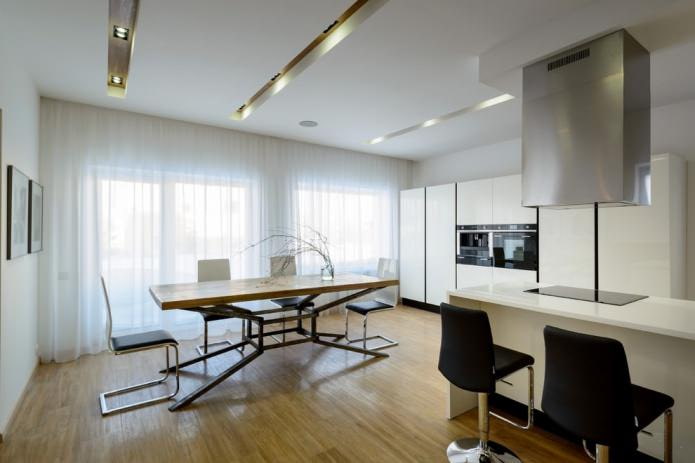
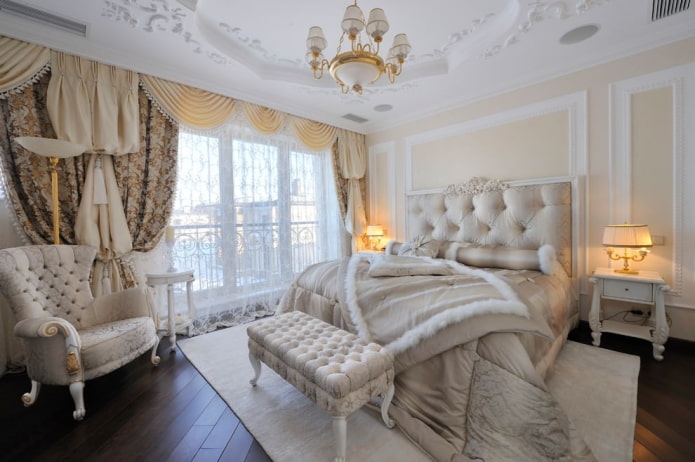
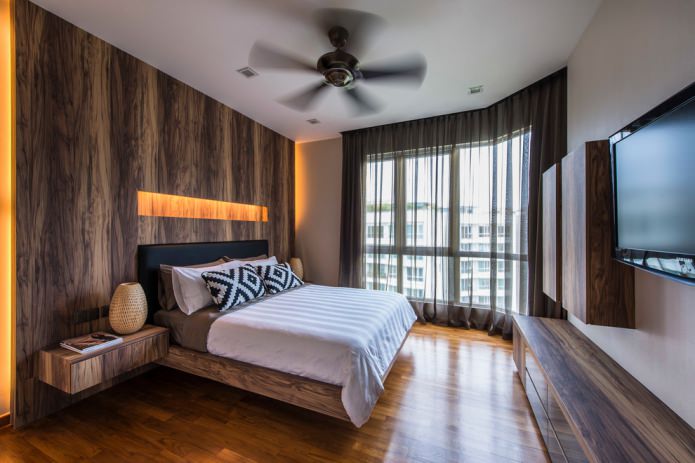
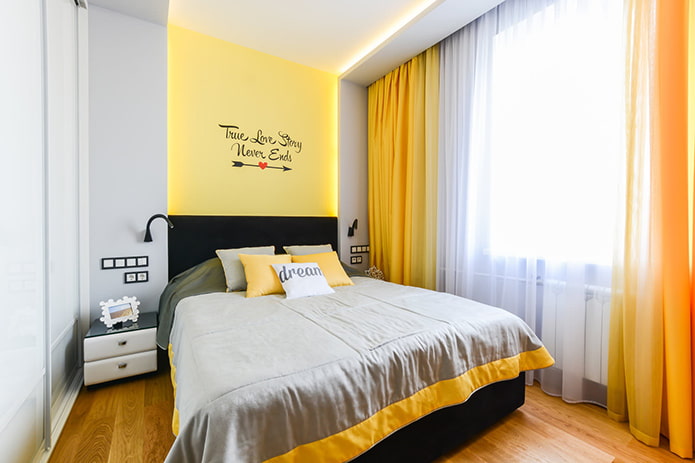
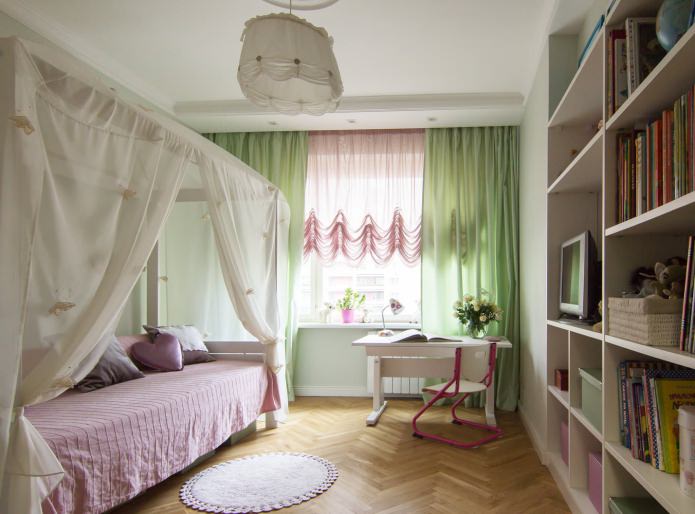


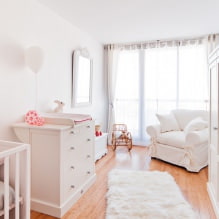
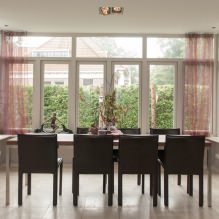
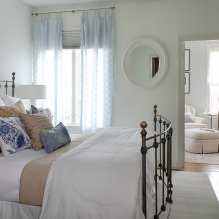
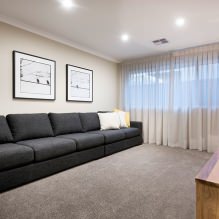
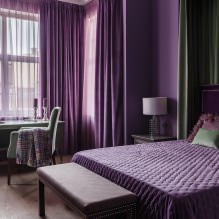

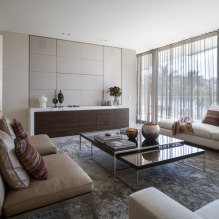
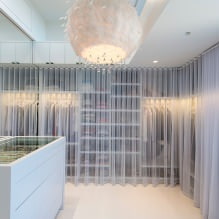
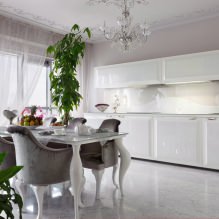
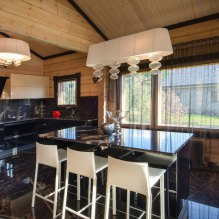

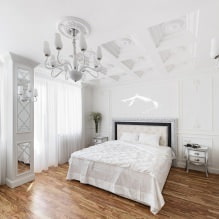


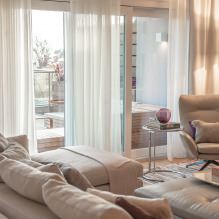
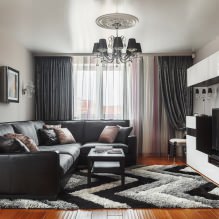


 Top 10 Trends in Interior Design 2020
Top 10 Trends in Interior Design 2020 Rating of cheap TVs with Smart-TV
Rating of cheap TVs with Smart-TV New Year's LED garlands on AliExpress - we disassemble while it's hot, so that the house is bright
New Year's LED garlands on AliExpress - we disassemble while it's hot, so that the house is bright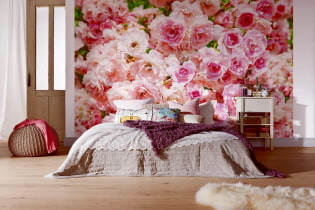 Wall mural with flowers in the interior: living wall decor in your apartment
Wall mural with flowers in the interior: living wall decor in your apartment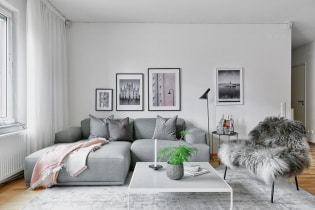 Gray sofa in the interior: views, photos, design, combination with wallpaper, curtains, decor
Gray sofa in the interior: views, photos, design, combination with wallpaper, curtains, decor Interior in peach tones: meaning, combination, choice of finishes, furniture, curtains and decor
Interior in peach tones: meaning, combination, choice of finishes, furniture, curtains and decor